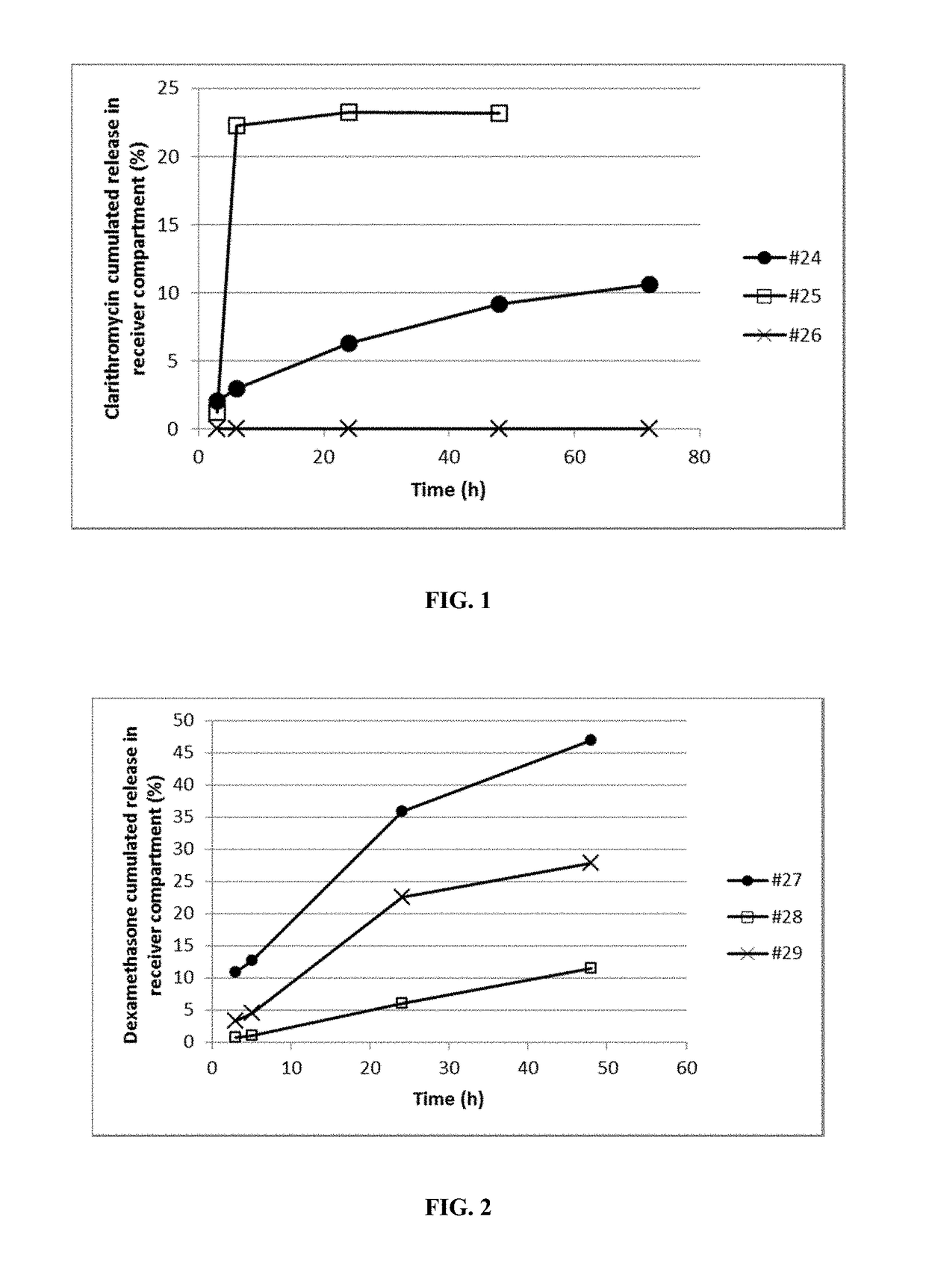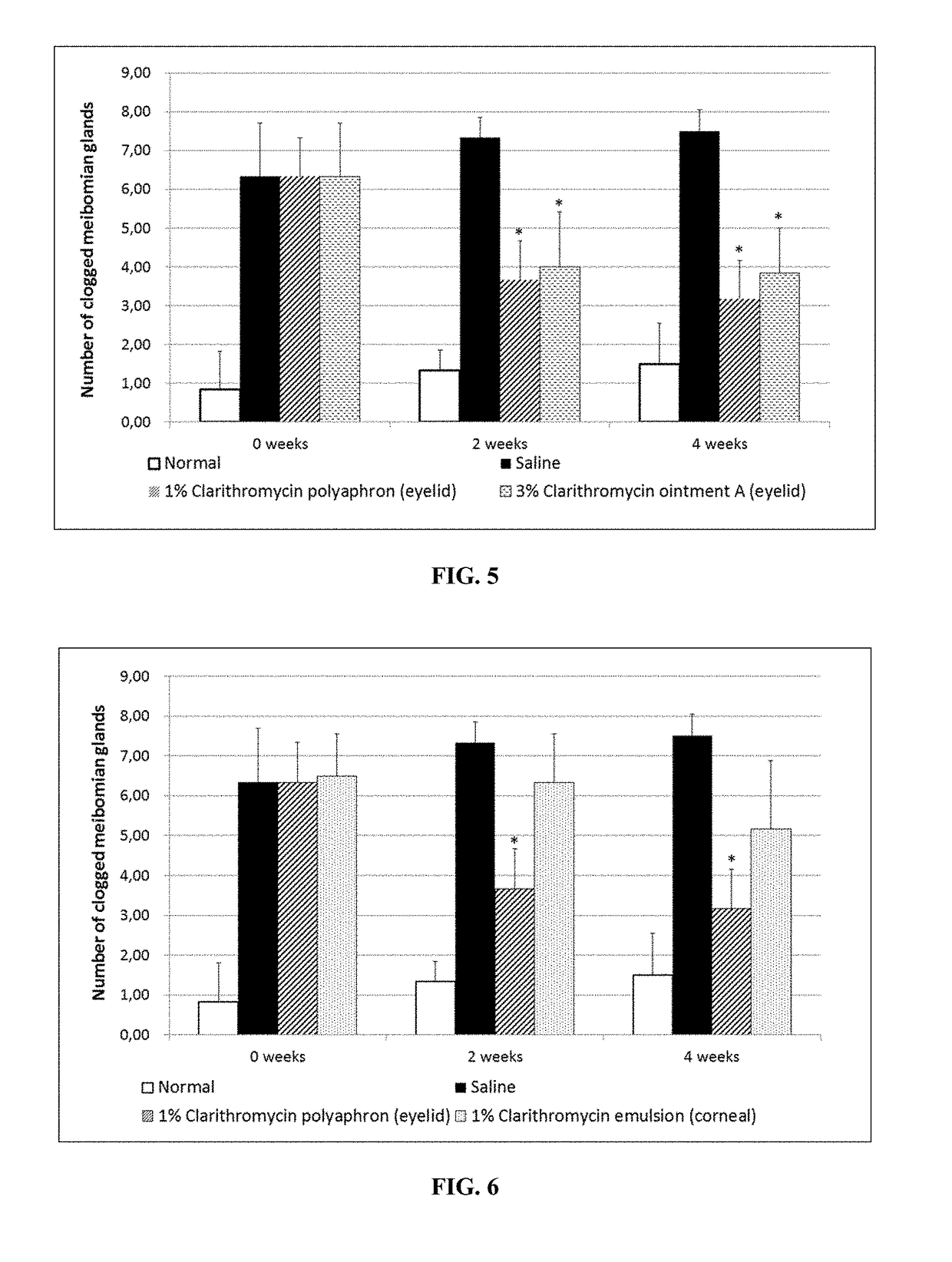Polyaphrons and palpebral administration thereof
a technology of polyaphrons and palpebral injection, which is applied in the direction of drug compositions, heterocyclic compound active ingredients, and sense disorders, etc., can solve the problems of topical administration, patients are not able to administer eye drops, and various problems, so as to reduce toxicity and/or side effects
- Summary
- Abstract
- Description
- Claims
- Application Information
AI Technical Summary
Benefits of technology
Problems solved by technology
Method used
Image
Examples
example 1
Oil-in-Water Polyaphrons Without Drug Substance, According to the Invention
[0158]
TABLE 1Composition of polyaphrons #1 to #6 (quantitiesare indicated in % weight / weight).Composition #123456MCT909090909045Triacetin45Poloxamer 1880.11.0Poloxamer 4070.11.0Polyoxyl-401.00.1stearateSorbitan oleate0.9WaterQs 100Qs 100Qs 100Qs 100Qs 100Qs 100
example 2
Oil-in-Water Polyaphrons Comprising Cyclosporin A, According to the Invention
[0159]
TABLE 2Composition of polyaphrons #7 to #15 (quantities are indicated in % weight / weight).Composition #789101112131415Cyclosporin A111111111MCT88.188.188.188.188.18988.177.288.1Polyoxyethylene (4)0.9lauryl etherSorbitan oleate0.90.90.90.90.91.80.9Poloxamer 1880.1Polyoxyl-400.11stearateSucrose laurate0.1Sucrose palmitate0.1Sucrose stearate0.1Alkyl polyglycoside0.1Polysorbate 800.2Vitamine E TPGS0.1Waterqs 100qs 100qs 100qs 100qs 100qs 100qs 100qs 100qs 100
example 3
Oil-in-Water Polyaphrons Comprising Dexamethasone Palmitate, According to the Invention
[0160]
TABLE 3Composition of polyaphrons #16 to #18(quantities are indicated in % weight / weight).Composition #161718Dexamethasone palmitate0.80.80.8MCT88.389.289.2Sorbitan oleate0.9Poloxamer 40710.1Polyoxyl-40 stearate0.1Waterqs 100qs 100qs 100
PUM
| Property | Measurement | Unit |
|---|---|---|
| mean size | aaaaa | aaaaa |
| viscosity | aaaaa | aaaaa |
| mean diameter | aaaaa | aaaaa |
Abstract
Description
Claims
Application Information
 Login to View More
Login to View More - R&D
- Intellectual Property
- Life Sciences
- Materials
- Tech Scout
- Unparalleled Data Quality
- Higher Quality Content
- 60% Fewer Hallucinations
Browse by: Latest US Patents, China's latest patents, Technical Efficacy Thesaurus, Application Domain, Technology Topic, Popular Technical Reports.
© 2025 PatSnap. All rights reserved.Legal|Privacy policy|Modern Slavery Act Transparency Statement|Sitemap|About US| Contact US: help@patsnap.com



